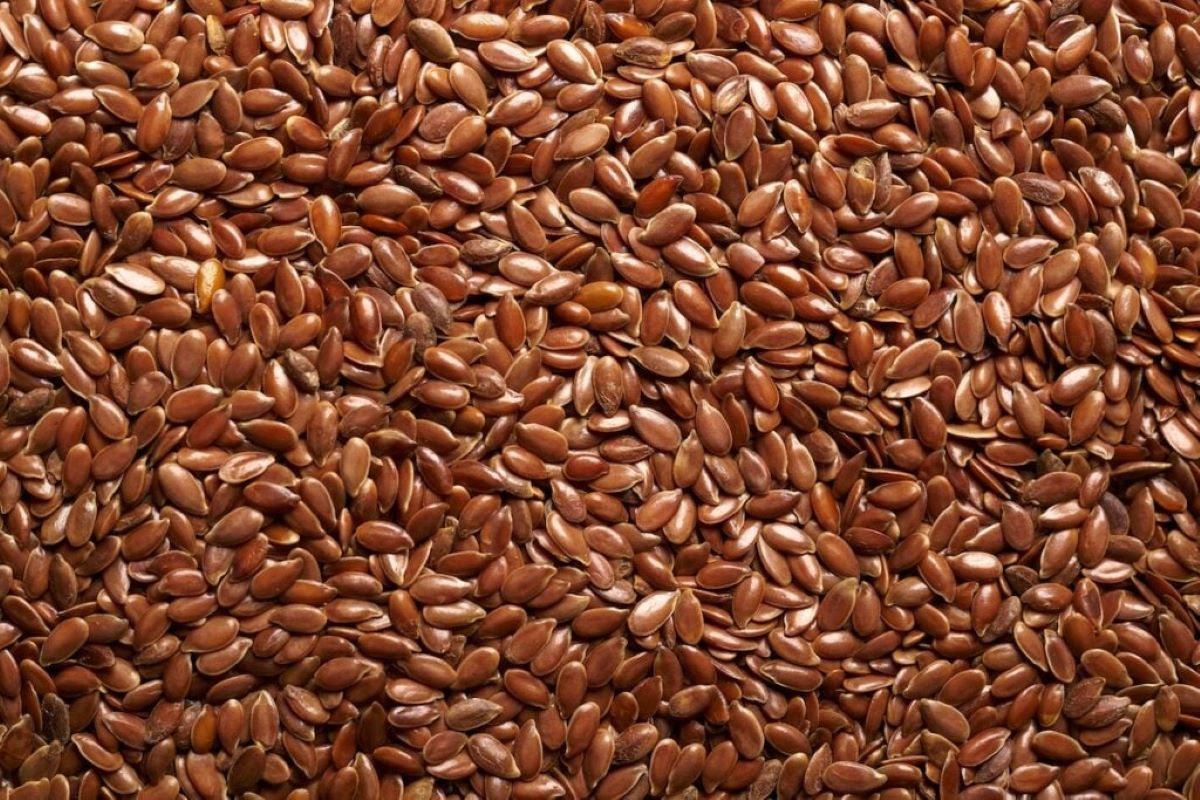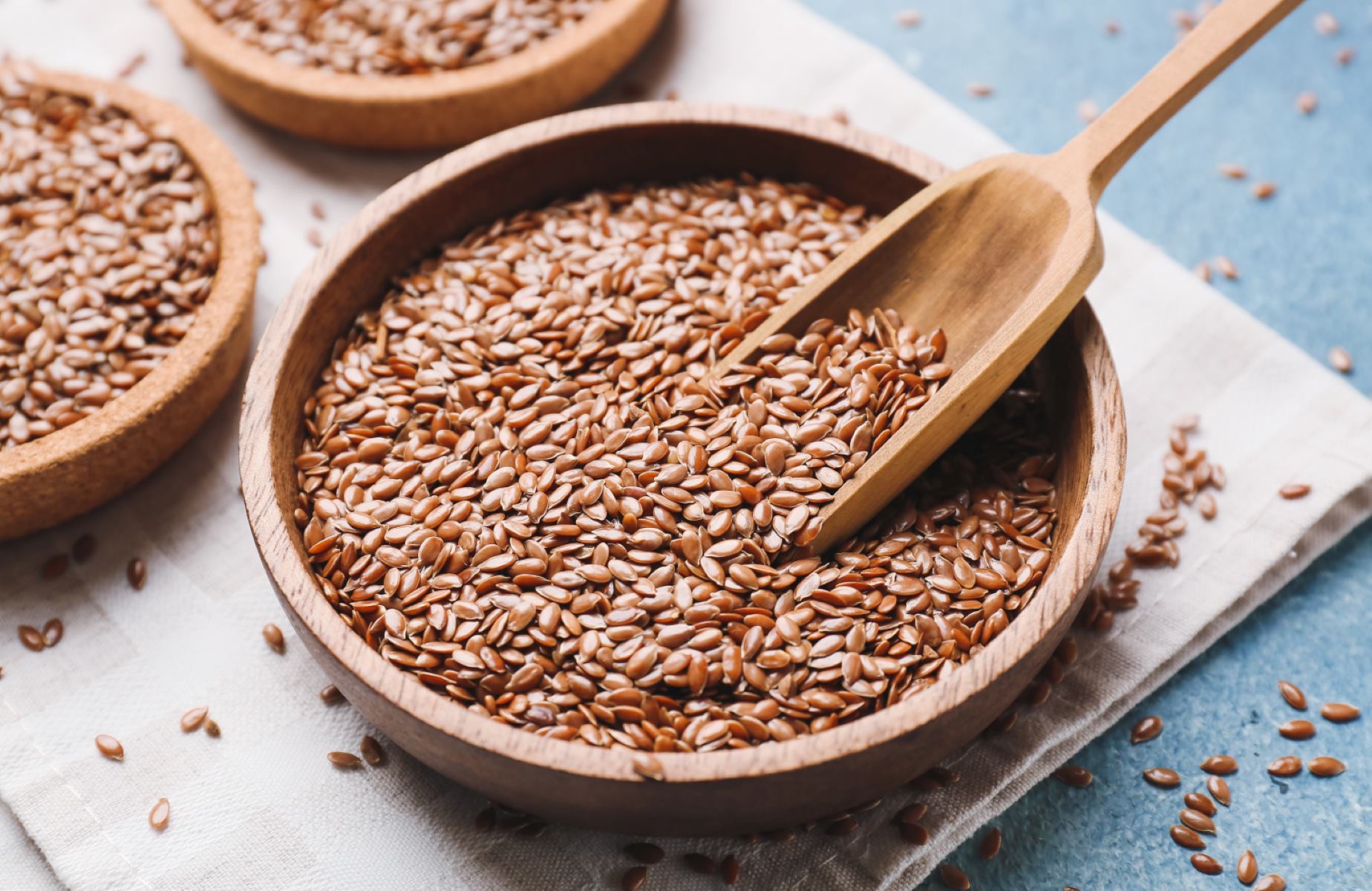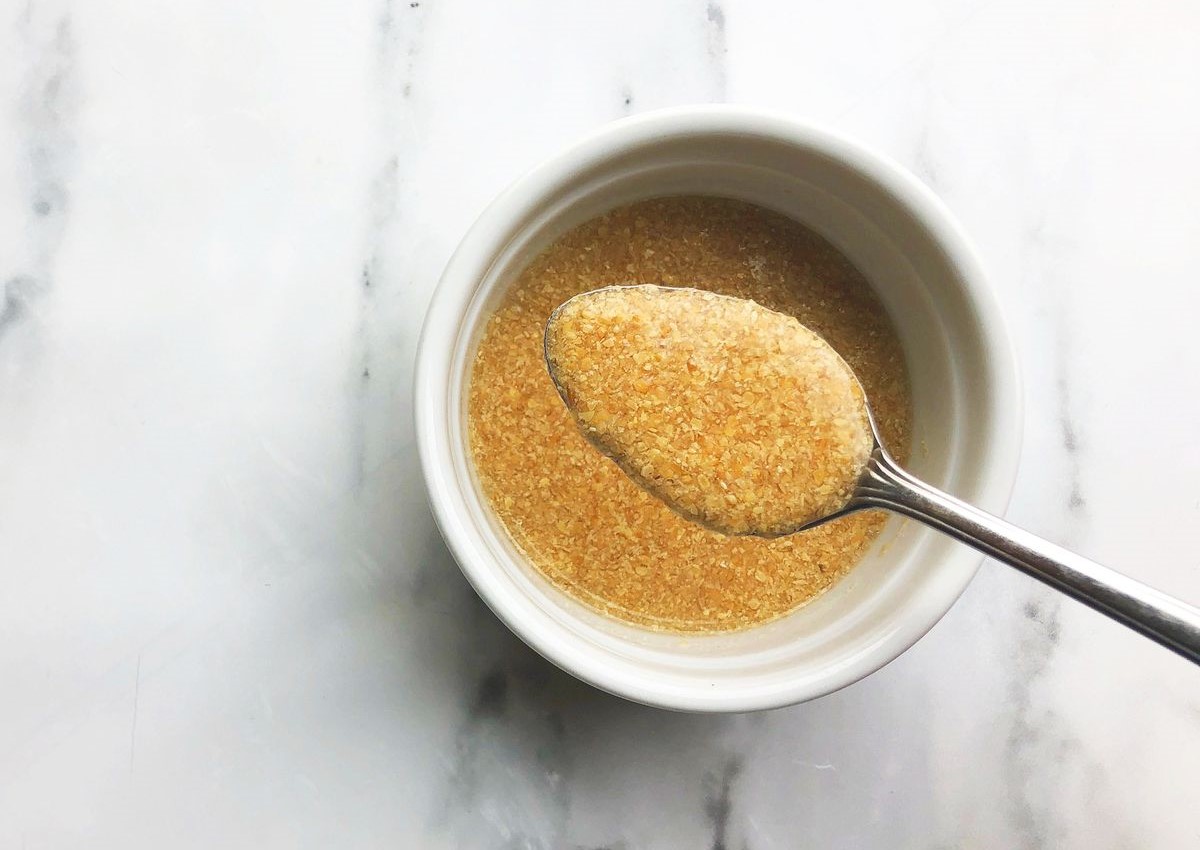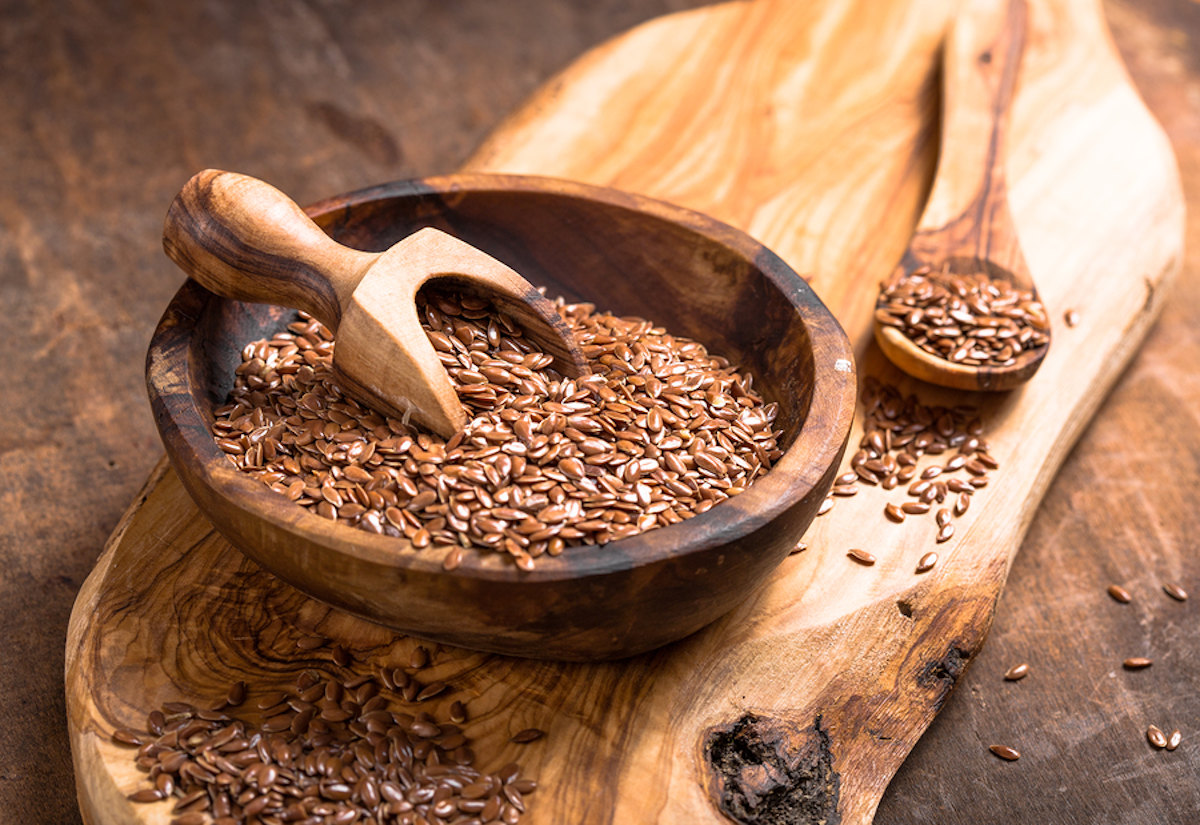

Articles
How To Store Flax Seeds Long Term
Modified: October 21, 2024
Discover the best methods for storing flax seeds long term in this informative article. Learn how to preserve their freshness and nutritional benefits for months to come.
(Many of the links in this article redirect to a specific reviewed product. Your purchase of these products through affiliate links helps to generate commission for Storables.com, at no extra cost. Learn more)
Introduction
Flax seeds, also known as linseeds, are tiny powerhouses packed with essential nutrients and health benefits. These small, golden or brown seeds have gained popularity in recent years due to their high content of omega-3 fatty acids, fiber, and antioxidants.
While flax seeds can be a great addition to your diet, proper storage is essential to maintain their freshness and nutritional value. Whether you have just purchased flax seeds in bulk or harvested them from your garden, knowing how to store them long term is crucial to preserve their quality.
In this article, we will explore the best methods to store flax seeds and ensure their longevity. We will delve into factors that impact flax seed storage, the preparation required before storing them, and the ideal containers for safekeeping. Additionally, we will discuss storing flax seeds in the pantry or refrigerator and provide tips on monitoring their shelf life. Let’s dive in!
Key Takeaways:
- Proper storage of flax seeds is crucial to maintain their freshness and nutritional value. Factors such as moisture, light, temperature, air, and container quality play a significant role in preserving the seeds.
- Storing flax seeds in airtight containers in a cool, dark pantry or refrigerator can extend their shelf life. Regular monitoring, proper storage conditions, and creative culinary uses ensure the longevity of these nutrient-rich seeds.
Read more: How Long Is Flax Seed Good For
Understanding Flax Seeds
Flax seeds, derived from the flax plant (Linum usitatissimum), have been consumed for thousands of years due to their numerous health benefits. These tiny seeds are a rich source of omega-3 fatty acids, which are essential for brain function, heart health, and reducing inflammation in the body. They also contain lignans, plant compounds that have antioxidant and hormone-balancing properties.
Flax seeds come in two main varieties: golden and brown. The golden flax seeds are slightly milder in flavor, while the brown ones have a nuttier taste. Both types offer the same nutritional benefits, so choose the one that suits your preference.
When it comes to incorporating flax seeds into your diet, you have two options: whole flax seeds or ground flax seeds. Whole flax seeds have a tough outer shell, which makes them harder for the body to digest and limits the absorption of their nutrients. On the other hand, ground flax seeds are easier to digest and allow the body to absorb their nutrients more efficiently.
To make the most of flax seeds’ nutritional benefits, it is recommended to consume them ground. You can purchase pre-ground flax seeds, or grind them at home using a blender or coffee grinder. However, if you choose to store flax seeds long term, it is recommended to store them in their whole form, as ground flax seeds have a shorter shelf life.
Now that we have a basic understanding of flax seeds let’s explore the factors that can affect their storage and how to prepare them for long term storage.
Factors Affecting Flax Seed Storage
Proper storage of flax seeds is crucial to preserve their freshness and nutritional quality. Several factors can impact the storage life of flax seeds. Let’s take a closer look at these factors:
- Moisture: Flax seeds can easily absorb moisture from the environment, which can cause them to become rancid or develop mold. It is important to store flax seeds in a dry environment to prevent moisture accumulation.
- Light: Exposure to sunlight and artificial light can degrade the quality of flax seeds due to the oxidation process. It is recommended to store flax seeds in opaque containers or in a dark pantry to protect them from light exposure.
- Temperature: Flax seeds should be stored in a cool environment to maintain their freshness. High temperatures can accelerate the oxidation process and shorten the shelf life of flax seeds. Storing them in a cool pantry or refrigerator will help extend their storage life.
- Air: Contact with air can lead to the oxidation of flax seeds, resulting in a decline in their nutritional quality and taste. Prolonged exposure to air can cause the oils in flax seeds to become rancid. It is important to store flax seeds in airtight containers to minimize air contact.
- Container Quality: The type of container used for storing flax seeds can make a significant difference in their storage life. Using high-quality, food-grade containers that are airtight and moisture-resistant will help preserve the freshness and nutritional value of flax seeds.
By taking these factors into consideration, you can ensure that your flax seeds remain fresh and nutritious for an extended period. In the next section, we will discuss the necessary steps to prepare flax seeds for long term storage.
Preparing Flax Seeds for Long Term Storage
Before storing flax seeds for the long term, it is important to take a few steps to ensure their optimal storage conditions. Here are the necessary preparations:
- Cleaning: Start by inspecting the flax seeds for any debris or impurities. Remove any stones, twigs, or damaged seeds. It is also recommended to give the flax seeds a quick rinse to remove any dirt or dust particles.
- Drying: Properly drying flax seeds is essential to prevent any moisture from being trapped during storage. Spread the cleaned flax seeds on a clean, dry towel or baking sheet and let them air dry for a few hours. Make sure they are completely dry before proceeding to the next step.
- Grinding (optional): If you prefer to consume ground flax seeds for better nutrient absorption, you can grind them just before consumption. However, if you are planning for long term storage, it is advised to store the flax seeds in their whole form as ground flax seeds have a shorter shelf life.
- Portioning: Divide the flax seeds into smaller portions that you can easily use in your daily cooking or smoothies. This will help minimize the exposure of the entire stock of flax seeds to air and moisture whenever you need to access them.
Once you have completed these preparations, you are ready to choose the right storage containers for your flax seeds. In the next section, we will discuss the ideal containers for long term flax seed storage.
Storage Containers for Flax Seeds
Choosing the right storage containers for flax seeds is crucial to maintain their freshness and extend their shelf life. Here are some ideal storage container options:
- Glass Jars: Glass jars with airtight lids are an excellent choice for storing flax seeds. They are non-reactive, preventing any chemical interactions that could affect the quality of the seeds. Additionally, glass jars are transparent, allowing you to easily monitor the quantity and condition of the flax seeds.
- Plastic Containers: If using plastic containers, ensure they are BPA-free and food-grade. Look for containers with airtight seals to keep the flax seeds fresh for longer. It is important to note that plastic containers may allow for slight air permeability, so it’s recommended to choose high-quality containers to minimize this issue.
- Vacuum Sealed Bags: Vacuum-sealed bags are a great option for long-term storage, as they remove the excess air and create a seal to protect the flax seeds from oxidation and moisture. Use a vacuum sealer or buy pre-sealed bags specifically designed for food storage.
- Metal Canisters: Metal canisters with tight-fitting lids can also be used to store flax seeds. Make sure the canisters are made from food-grade materials to prevent any chemical reactions with the seeds. Metal canisters are durable and provide a good barrier against light and air.
- Resealable Bags: If you are portioning the flax seeds, resealable bags can be a convenient option. Choose durable, food-grade bags with strong seals to ensure maximum freshness. Squeeze out any excess air before sealing the bags to minimize oxidation.
Regardless of the type of container you choose, ensure that it is clean, dry, and airtight to create the best storage environment for your flax seeds. Store the containers in a cool, dark place to further protect the seeds from light and heat exposure.
Now that you know the ideal containers for storing flax seeds, let’s explore two common storage methods: keeping them in the pantry or cupboard, and storing them in the refrigerator or freezer.
Store flax seeds long term by keeping them in an airtight container in a cool, dark place, such as the refrigerator or freezer. This will help to preserve their freshness and prevent them from going rancid.
Read more: How To Preserve Seeds Long Term
Storing Flax Seeds in Pantry or Cupboard
The pantry or cupboard can be a suitable place to store flax seeds, as long as the conditions are optimal. Here are the steps to properly store flax seeds in the pantry or cupboard:
- Choose the Right Spot: Select a cool, dark, and dry area in your pantry or cupboard to store the flax seeds. Avoid areas near the stove, oven, or any other heat sources.
- Use Airtight Containers: Transfer the prepared flax seeds into airtight containers like glass jars or plastic containers. Ensure that the containers are clean, dry, and tightly sealed to prevent air and moisture from entering.
- Label and Date: It is important to label the containers with the date of storage to keep track of the flax seeds’ freshness. This will help you use the oldest seeds first to maintain their quality.
- Organize and Store: Arrange the containers in the pantry or cupboard, making sure they are easily visible and accessible. Avoid stacking the containers to prevent unnecessary crushing or damage to the seeds.
- Monitor the Temperature: Regularly check the temperature in your pantry or cupboard to ensure it remains cool and stable. Fluctuations in temperature can affect the quality and shelf life of flax seeds.
By following these steps, you can store flax seeds in your pantry or cupboard for an extended period while maintaining their freshness and nutritional value. However, if you live in a hot and humid climate or your pantry is prone to temperature fluctuations, storing flax seeds in the refrigerator or freezer might be a better option.
In the next section, we will explore the process of storing flax seeds in the refrigerator or freezer.
Storing Flax Seeds in Refrigerator or Freezer
If you prefer to maximize the shelf life of your flax seeds, storing them in the refrigerator or freezer is an excellent option. Here’s how you can store flax seeds in these cold environments:
Refrigerator:
- Select a Suitable Container: Choose an airtight container like a glass jar or a plastic container to store the flax seeds in the refrigerator. Make sure the container is clean, dry, and tightly sealed.
- Transfer and Seal: Transfer the prepared flax seeds into the container and seal it tightly. This helps to prevent air and moisture from entering the container and spoiling the flax seeds.
- Label and Date: Label the container with the date of storage to keep track of the freshness of the flax seeds. This way, you can use the oldest seeds first and maintain their quality.
- Place in the Refrigerator: Find a suitable spot in your refrigerator, such as the middle shelf or vegetable crisper drawer, to store the container of flax seeds. Ensure that the temperature remains consistently cool and does not fluctuate.
Freezer:
- Choose a Freezer-Safe Container: Opt for a freezer-safe, airtight container to store the flax seeds. Glass jars with freezer-safe lids or heavy-duty freezer bags are suitable options.
- Transfer and Seal: Transfer the flax seeds into the container, leaving a bit of space at the top for expansion. Seal the container tightly to prevent air and moisture from entering.
- Label and Date: Label the container or bag with the date of storage to keep track of the flax seeds’ freshness. This will help you use the oldest seeds first and maintain their quality.
- Place in the Freezer: Find a spot in your freezer where the temperature remains consistently cold. Make sure the flax seeds are not placed near the freezer door to avoid exposure to temperature fluctuations.
When you are ready to use the flax seeds, simply remove the desired portion from the refrigerator or freezer and allow it to come to room temperature before use. This will prevent condensation from forming and affecting the quality of the seeds.
Now that you know how to store flax seeds in the refrigerator or freezer, let’s move on to the next section to learn about monitoring the shelf life of flax seeds.
Monitoring Flax Seed’s Shelf Life
It is important to monitor the shelf life of flax seeds to ensure their freshness and quality. Flax seeds, like any other food product, can deteriorate over time. Here are some tips to help you monitor the shelf life of flax seeds:
- Expiration Date: Flax seeds typically have a shelf life of about 6-12 months when stored properly. Check the expiration date of the flax seeds if you purchased them packaged. This will give you a general idea of how long they can be stored.
- Sensory Evaluation: Visually inspect the flax seeds for any signs of spoilage, such as mold, discoloration, or a rancid smell. If you notice any of these indicators, it is best to discard the flax seeds.
- Taste Test: If the flax seeds appear to be visually fine but you have doubts about their freshness, you can perform a taste test. Consuming a few seeds can give you an idea of their flavor. Rancid flax seeds will have a strong, unpleasant taste.
- Quality Test: To assess the quality of the flax seeds, crush a few seeds between your fingers. Fresh flax seeds should have a nutty aroma and a slightly crunchy texture. If they feel soft, oily, or have a stale smell, they may have gone bad.
- Storage Conditions: Ensure that you are storing the flax seeds in optimal conditions, following the guidelines mentioned earlier. Periodically check the containers for any signs of air leakage or moisture seepage.
- Regular Rotation: To maintain the freshness of your flax seeds, practice regular rotation. Use the oldest flax seeds first before moving on to the newer ones. This ensures that you are consuming the freshest and highest-quality seeds.
By regularly monitoring the shelf life of your flax seeds and following these guidelines, you can ensure that you are consuming fresh and nutritious seeds. Now, let’s explore how to use the stored flax seeds in your daily routine.
Using Stored Flax Seeds
Stored flax seeds can be a versatile addition to your daily routine, providing a nutritional boost to various dishes. Here are some creative ways to incorporate flax seeds into your diet:
- Smoothies: Add a tablespoon of ground flax seeds to your favorite smoothie recipe to enhance its nutritional content. The mild nutty flavor of flax seeds blends well with fruits, vegetables, and other smoothie ingredients.
- Baking: Replace a portion of traditional flour with ground flax seeds in your baked goods, such as muffins, bread, or pancakes. This not only adds a nutty flavor and texture but also boosts the fiber and omega-3 content of your baked treats.
- Cereal and Yogurt Toppings: Sprinkle whole or ground flax seeds on top of your breakfast cereal, oatmeal, or yogurt. This adds a pleasant crunch and boosts the nutritional value of your morning meal.
- Salads and Soups: Sprinkle a tablespoon of whole or ground flax seeds onto your favorite salads or soups. They provide a textural contrast and add a subtle nutty flavor. Just be sure to add the flax seeds right before serving to maintain their crunchiness.
- Homemade Energy Bars: Incorporate flax seeds into homemade energy bars, granola bars, or protein balls. They provide a nutritious boost of omega-3s, fiber, and essential fatty acids.
- Egg Replacer: Flax seeds can be used as an egg replacement in vegan baking. To substitute one egg, mix one tablespoon of ground flax seeds with three tablespoons of water, and let it sit for a few minutes until it thickens. This mixture can replace eggs in recipes like cakes, muffins, and cookies.
Remember to store the flax seeds properly after each use to maintain their freshness and extend their shelf life. This will ensure that you have a steady supply of nutrient-rich flax seeds for all your culinary creations.
Now that you know how to use the stored flax seeds in your everyday meals, let’s wrap up the article with a summary of the key points we discussed.
Read more: How Long Can You Keep Flax Seeds
Conclusion
Flax seeds are a nutritional powerhouse that can provide numerous health benefits when incorporated into your diet. Proper storage is essential to preserve the freshness and quality of flax seeds for an extended period. By considering factors such as moisture, light, temperature, air, and container quality, you can ensure that your flax seeds remain in optimal condition.
Preparing flax seeds for long-term storage involves cleaning, drying, and portioning them, depending on your preference. Choosing the right storage containers, such as glass jars, plastic containers, or vacuum-sealed bags, can help maintain the freshness of the seeds. Storing flax seeds in a cool, dark pantry or cupboard is an option, as long as the conditions are optimal.
Alternatively, refrigerating or freezing flax seeds can extend their shelf life. Properly sealed containers should be used for storing flax seeds in the refrigerator, while freezer-safe containers or bags are suitable for freezing them. Regularly monitoring the shelf life of flax seeds, rotating your storage, and ensuring proper storage conditions will help you maintain their freshness and nutritional value.
When it comes to using stored flax seeds, the possibilities are endless. You can incorporate them into smoothies, baked goods, cereal, salads, energy bars, and more. Their nutty flavor and nutritional benefits make them a versatile addition to a variety of dishes.
In conclusion, by understanding the factors affecting flax seed storage, preparing them properly, using suitable containers, and monitoring their shelf life, you can enjoy the benefits of flax seeds for an extended period. With proper storage and creative culinary uses, flax seeds can be a valuable addition to your healthy lifestyle.
Frequently Asked Questions about How To Store Flax Seeds Long Term
Was this page helpful?
At Storables.com, we guarantee accurate and reliable information. Our content, validated by Expert Board Contributors, is crafted following stringent Editorial Policies. We're committed to providing you with well-researched, expert-backed insights for all your informational needs.














0 thoughts on “How To Store Flax Seeds Long Term”